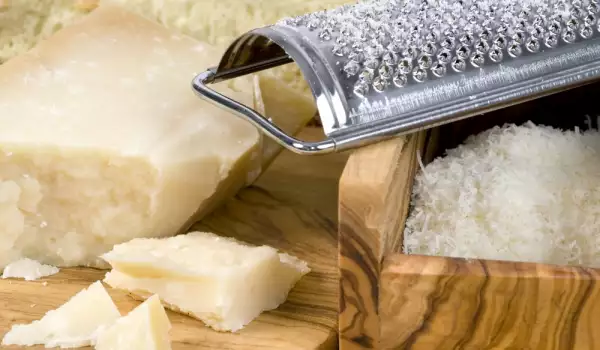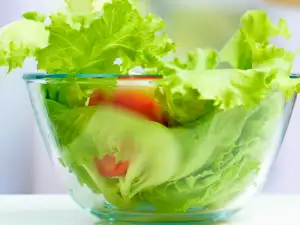Grana padano is a very popular Italian hard cheese. Its name comes from "grana" - grain, making allusion to the grainy structure that it has cheese and Padano, which means that it comes from regions located along the river. Grana Padano is spicy and salty with a slight shade of walnut.
It is believed that Grana Padano is one of the first hard cheesed produced in Italy 900 years ago, by monks near Milan. By 1470 this cheese is considered to be the most popular in the country.
It is very similar to its popular cousin - parmesan, but is not only produced in the region Emilia-Romagna, but in many other areas - Piedmont, Lombardy, Veneto, Trentino-South Tyrol. Another interesting difference between the two cheeses is that production of parmesan uses milk from cows that are fed only grass or hay. To obtain Grana Padano, they use milk from cows that are fed with grain feed.
Grana Padano ripens slowly - for a year and a half of production are required 18 liters of fresh cow's milk.
Composition of Grana Padano

Grana Padano has unique nutritional properties, starting with the fact that it is easily digested and absorbed quickly through the spices and amino acids that make up about 20% of it.
Grana Padano is rich in high quality organic protein similar to that in milk. 100 g of this cheese contains 385 calories and high protein - found in 200 grams of meat. Nutrients in 100 grams grenade falls in line with those in the liter and a half of milk.
Furthermore, Grana Padano squarely contradicts the concept that cheeses only contain saturated fat. It contains 40% unsaturated fats, which are considered to be most beneficial for the human body. The average amount of cholesterol in 50 g of cheese is only 40 mg. It contains high amounts of calcium, phosphorus, magnesium, copper, zinc and many B vitamins - A, B1, B2, B6, B12, D, PP and E.
Selecting and storing Grana Padano
Grana Padano is produced in the form of cakes, reaching impressive weight between 24 and 40 kg. In Italy, cheese is sold in smaller chunks, which they extend to the entire cake using a special tool for cheese.
The inside of the Grana Padano is straw-colored, has a slightly granular structure without holes - making it perfect for grating. It can also be found in small cuts in larger chain stores. Best is to buy it in chunks, not shredded because it quickly loses its flavor and taste.
Keep Grana Padano well wrapped in the refrigerator or a cool enough place. If you get a bigger cake of cheese, shred it immediately before consumption.
Grana Padano in cooking
As mentioned, the structure of Grana Padano is great for grating. As such, it is ideal for sprinkling on delicious noodles, pastas, soups, vegetable salads and risotto. The taste of the cheese is complemented with red wine. You can serve a lump with a slice of bread or a nice cup of balsamic vinegar in which to submerge it.

We present a typical Italian recipe for stuffed tomatoes with Grana Padano. To be more precise, this recipe is Padan. You need 12 small tomatoes, 150 grams Grana Padano, 4 tablespoons of milk and parsley for decoration.
Beat the milk and grate the cheese. Cut tomatoes in half and carve them inside, then add the cheese and milk. Fill the tomato halves with the mixture and arrange them in a baking dish that has previously been greased with butter. Bake for about 15 minutes in a heated oven. Garnish with a sprig of parsley and serve.
Benefits of Grana Padano
Because cheese is high in calcium, it is great food for strengthening the bones of adolescents and the elderly. The iodine in it is a valuable ingredient that has beneficial effects on the body. Grana Padano can be consumed by all age groups because of the high content of nutrients. The tiny amount of fat in it makes it suitable for diet regimes.

















